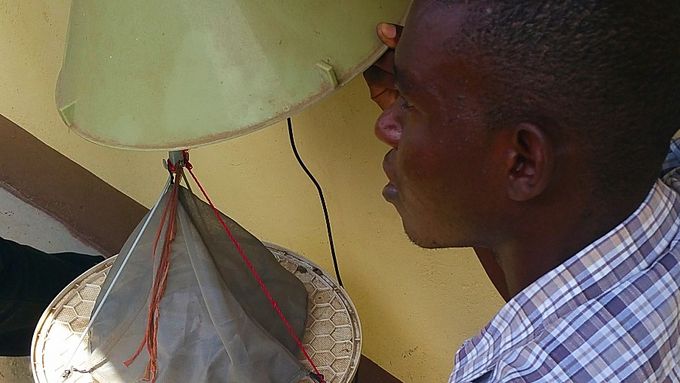Combating Malaria with Odour-Baited Traps for Mosquitoes
09.08.2016 by Lukas Meier
The use of a newly-developed mosquito trap incorporating human odour has resulted in a 70% decline in the population of the most significant malaria mosquito on the Kenyan island of Rusinga. In the following, the number of malaria infections declined by 30% according to a «Lancet»-study published today.

The Suna Trap attracts mosquitoes with a human scent.
A newly-developed mosquito trap outsmart malaria-transmitting mosquitoes. It attracts the insects by emitting a natural lure – namely human odour - composed of lactic acid and other substances transpired by the human skin. The mosquitoes approach the trap and are sucked into by a fan running with solar energy. The study published today showed that the trap resulted in a 70% decline in the Anopheles populations on the Kenyan island of Rusinga. The number of malaria infections decreased by 30%. It is the first study to show a positive health effect of mosquito traps. Therefore the trap could become a decisive tool to eradicate the disease. “The trap kills the insects without relying on insecticides” says Willem Takken from the University of Wageningen. There is no negative impact on the environment and it is very unlikely that the mosquitoes will become resistant.
Better living conditions
The success of the new approach lies in the combination of the odour-baited trap with mosquito nets, anti-malaria drugs, and a solid social strategy. The odour-baited traps need electricity to operate, but there is no central electricity supply on Rusinga, an island in Lake Victoria. Solar panels were installed on the roofs of homes. These not only provided electricity for the mosquito traps but also provided the homes with power for light and to charge a mobile phone. Great efforts were also made in relation to education about malaria and actively engaging the inhabitants of Rusinga in the project. During the project all households on Rusinga were equipped with a mosquito trap. Overall, 4’500 traps have been installed.
Zika Virus and Dengue Fever
The odour-baited trap may also offer a solution to diseases like Dengue fever and the Zika virus. “Also Aedes aegypti, the vector transmitting the Zika-virus or Degue fever are attracted by human scent and could possibly be contained by such a trap”, says Tom Smith from Swiss TPH. Zika and dengue fever could therefore be combated with the odour-baited traps. Malaria: a major cause of death and an economic problem.Malaria: Human and Economic Costs
Every 30 seconds, a child dies of malaria. This disease costs Africa twelve billion dollars a year in health-care costs and lost productivity, particularly in the agricultural sector. Fighting malaria without using insecticides is vital to world food production. WHO formulated the aim of eradicating the disease by 2030. Therefore, new investments in developing drugs and vaccines and in fighting the mosquitoes are needed. The odour-baited trap could play a central role in this endeavour.
Stay connected
Subscribe to our newsletter and get all the latest research news, project updates, course and event listings from Swiss TPH.